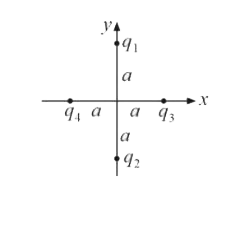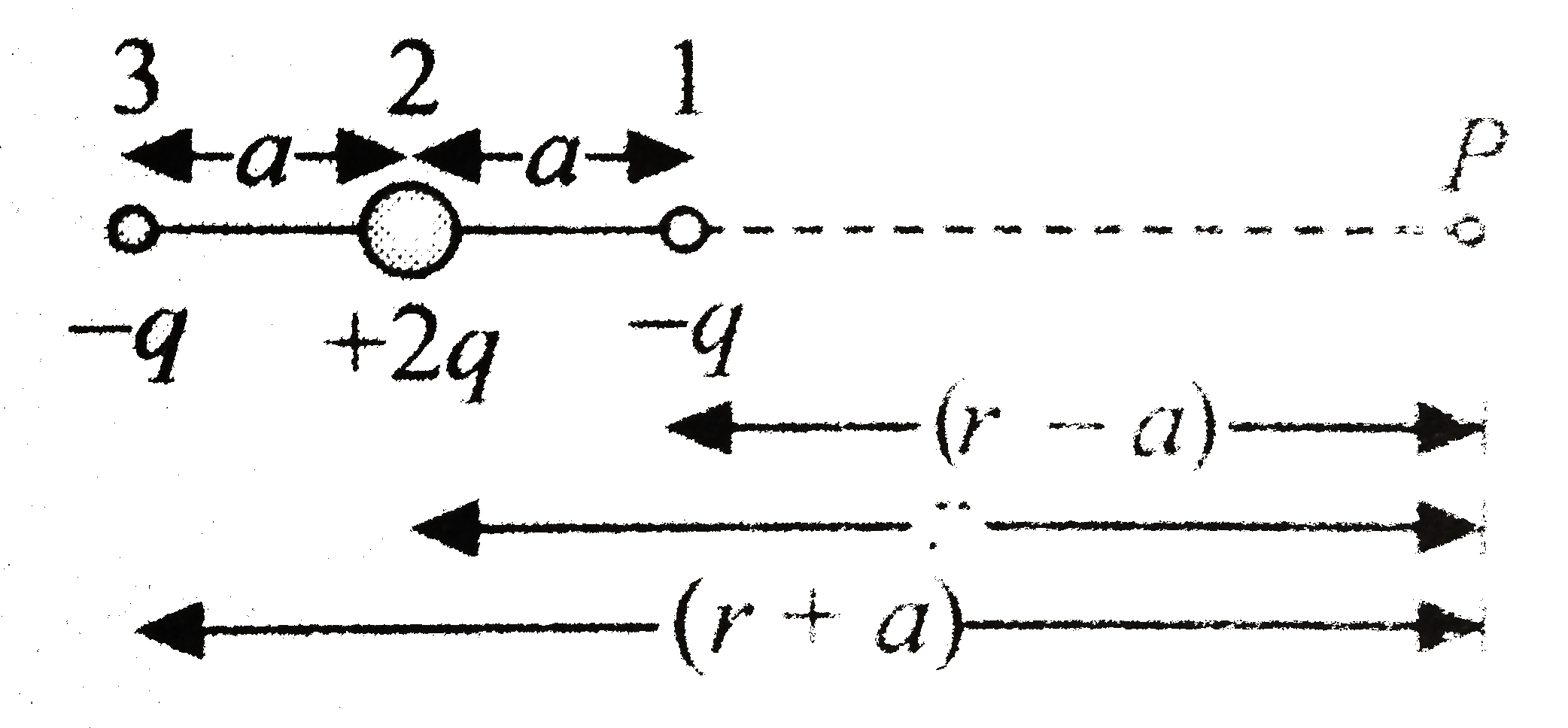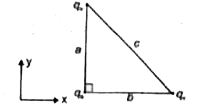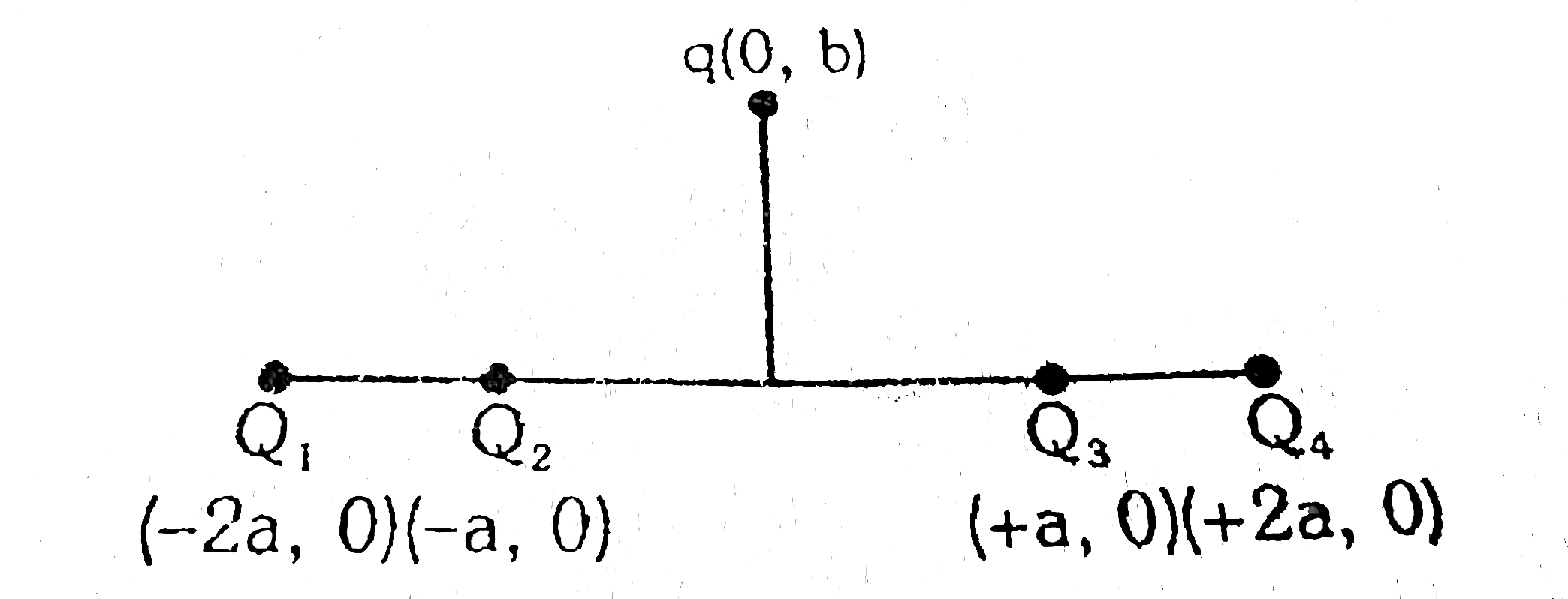Four charges q1=q2=−q3=−q4=q are arranged in the y-plane forming an elastic quadrupole. Bringing these charges from infinity, what is the needed work to compose such an arrangement?

kqa(1−2√2)
kq2a(2√2)
kq22a(1−2√2)
kq2a(1−2√2)
The correct Answer is:D
The electrostatic energy required to compose such a system is given as follows
U=k2∑i≠jqiqjrij
Where rij=∣∣ri−rj∣∣
Inserting data from the figure to equation (i), we get,
U=(q1q2r12+q1q3r13+q1q4r14+q2q3r24+q2q3r23+q3q4r34)k =kq2a(12−1√2−1√2−1√2−1√2−1√2+1√2)
=kq2a(1−2√2)
Similar Questions
Knowledge Check
- Question 1 - Select One
Four equal charges Q are placed at the four corners of a square of each side is 'a'. Work done in removing a charge −Q from its centre to infinity is
A0B√2Q24πε0aC√2Q2πε0aDQ22πε0a - Question 2 - Select One
Four positive charges (2√2−1)Q are arranged at the four corners of a square. Another charge q is placed at the center of the square. Resulting force acting on each corner charge is zero if q is
A−7Q4B−4Q7C−QD−(√2+1)Q - Question 3 - Select One
Assertion: Four point charges q1,q2,q3 and q4 are as shown in Fig,The flux over the shown Gaussians surface depends only on charges q1 and q2
Reason:Electric field at all points on Gaussians surface depends on any charges q1 and q2
 ABoth (A) and (R) are true and 'R' is the correct explanation of A.BBoth A and R are true and R is not the correct explanation of AC(A) is true but (R) is falseD(A) is false but (R) is true
ABoth (A) and (R) are true and 'R' is the correct explanation of A.BBoth A and R are true and R is not the correct explanation of AC(A) is true but (R) is falseD(A) is false but (R) is true
Four identical charges q are kept on each vertices of a square of side a. Calculate the extra amount of work done in bringing a Q charge from infinity to the centre of the square.
View SolutionThree charges -q,+2q, and -q are arranged on a line as shown in fig. Calculate the field at a distance rgtgta on the line.
 View Solution
View SolutionSuppose that three point charges qa,qb and qc are arranged at the vertices of a right -angled triangle as shown . What is the absolute electric potential at the position of the third charge if qa=−6.0μC,qb=+4.0μC,qc=+2.0μC,a=4.0m and b=3.0 m ? Suppose that the third charge which is initially at rest is repelled to infinity by the combined electric field of the other two charges which are held fixed . What is the final kinetic energy of the third charge ?
 View Solution
View SolutionFour equal charges Q are placed at the four corners of a square of each side is 'a'. Work done in removing a charge −Q from its centre to infinity is
View SolutionFour charges Q1,Q2,Q3 and Q4 oof same magnitude are fixed along the x axis at x=−2a,−a,+a and +2a, respectively. A positive charge q is placed on the positive y axis at a distance b>0. Four options of the signs of these charges are given in List I. The direction of the forces on the charge q is given in List II. Match List I with List II and select the correct answer using the code given below the lists.

List-IList-II(P)Q1,Q2,Q3,Q4all positive(1)+x(Q)Q1,Q2 positive, Q3,Q4 negative(2)−x(R)Q1,Q4 positive ,Q2,Q3 negative(3)+y(S)Q1,Q3 positive , Q2,Q4 negative(4)−yView Solution


